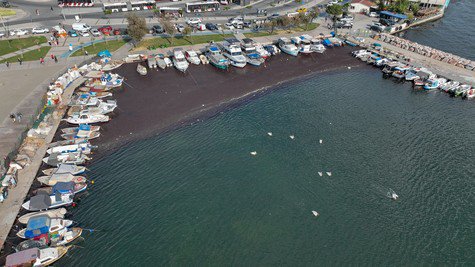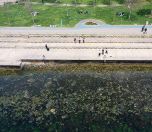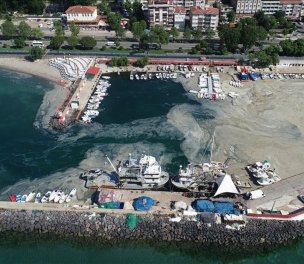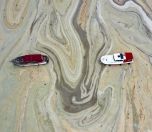Click to read the article in Turkish
The increase in nitrogen and phosphorus levels in seawater has caused the resurgence of seaweed (Ulva) in the İzmir Bay in western Turkey due to the rising temperatures.
Seaweed, also known as "sea lettuce" among the public, is typically observed along the southern coast of the inner bay in İnciraltı and the northern coast in Bostanlı. However, it has spread to the Konak shores due to the influence of winds, resulting in pollution.
Seaweed formation is attributed to the rise in nitrogen and phosphorus levels in water caused by domestic, urban, and industrial waste, as well as agricultural and animal activities.
Impact on the ecosystem
Efforts are underway by İzmir Metropolitan Municipality teams to clean up the sea lettuce, which forms islands not only along the coast but also in the middle of the bay.
Speaking to Anadolu Agency, Prof. Dr. Ergün Taşkın, the Head of the Hydrobiology Department at the Faculty of Science and Literature of Manisa Celal Bayar University, explained that the recent occurrence of seaweed is related to pollution resulting from seasonal changes.
Taşkın emphasized that seaweed does not pose a direct threat to humans but has a significantly negative impact on the ecosystem.

Erol Kesici, a retired faculty member from the Faculty of Aquaculture at Süleyman Demirel University, explained how the problem could be addressed, saying, "We must continuously clean the bay. The water reaching the bay must be fully treated. If possible, wastewater should not be discharged into this area during specific periods. Surface waters will flow through streams, rivers, and canals, but we need to establish treatment systems in those areas.
"The channels of rivers should not be made of concrete. The sediment at the bottom must be cleaned regularly. We will leave the coasts as natural filters, allowing their natural flow, and they should not be occupied." (TY/VK)




.jpg)


